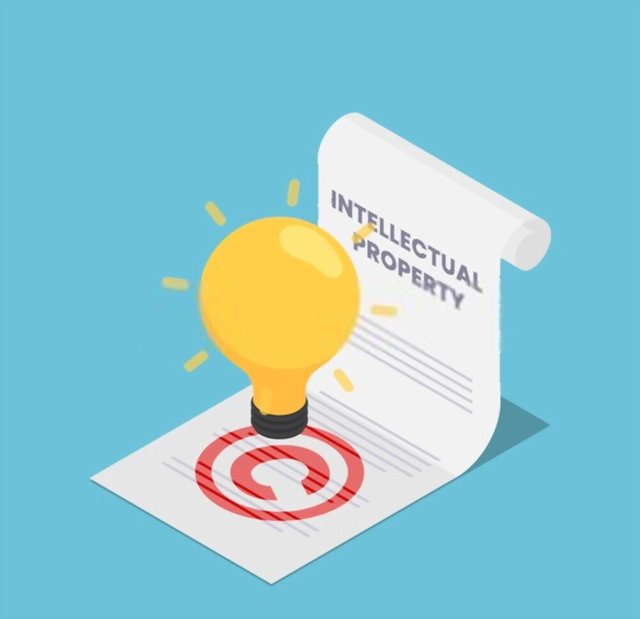Patents: What They Are and How They Affect Your Business
When you're building a business, the last thing you want to worry about is patent infringement. Unfortunately, startups are especially at risk of this — they're small businesses with low cash reserves and limited resources. So what can you do? Here's a complete guide to patents: what they are, how they affect your business (and not just in the context of startups), and how to avoid accidentally infringing on someone else's patents.
- Patents are used to protect your invention
A patent is a document which gives you the exclusive right to make, use, and sell an invention for a limited period of time. If you don’t have a patent on your invention, then someone else can make, use, and sell the same invention without your permission.Patents are a way for companies and individuals to protect their intellectual property and lock others out of the market. When you buy a patent, you’re giving up some of your ownership rights in the invention until such time as you make or sell it, under the terms of the patent.
There are two main categories of patents:
Submitting a patent is basically like applying to a university for a research grant, or applying for unemployment benefits (the government’s main approval method) in the US — you have to prove that you have the necessary resources to fund your project.
To get patents, both startups and large corporations get paid a fee in return for committing to use their inventions for a limited period of time.
There are two main steps to successfully getting a patent:
Obviously, you need to have a pretty strong hypothesis to get a patent — otherwise, no company would spend the time and money to invest in an idea, especially one claiming cultural, national, or economic value.
Often, companies will acquire an idea from another person, and resell it based on their own expectations. This is an expensive and risky process, because if a competitor discovers your invention, then your patent could be invalidated, which can cost you thousands or even millions of dollars.
When a company acquires an idea in this way, it must first determine if it can market, sell, and use the invention. If they can, then they can apply to the patents office to register the patent. This means that anytime large entities create a similar product, they will have to try to get a patent on the market as well.
What is a patent and how does it work?
A patent is a set of exclusive rights granted by a government to an inventor or their assignee for a limited period of time in exchange for public disclosure of an invention. It provides the owner of a patent the right to prevent others from making, using, selling, or importing the patented invention without permission. The crucial thing to understand is that the patent means nothing prevents you from making or using something that you find useful without getting an actual patent.
It’s relatively easy to get patents. Typically, you have to make a good business case for why someone should pay you royalties. Then you wait for a month or two, maybe a year, until an inventor submits an application for the patent yourself. If you win, you can get 2–5 years for free. The downside is that, once an investor has claimed an invention, no one else can make or use it without your permission (for obvious reasons).
There are about 500,000 patent applications filed per day.
Patents are pretty expensive to obtain. And if you get sued for infringing someone else’s patent, it pays to invest in legal defence — or at least to understand who might be trying to take your business down.
As an owner of a non-software piece of intellectual property, you have many options at your disposal to poke around in someone else's patent. For software, you can inspect the abstract, look at previous versions of the patent or the patent applicant’s published works, and generally read and/or study the patent to determine if it might be relevant to your business or product. If you’re on the software side of things, you’re in luck: most patents cover software (though not necessarily connected to your product).
However, are you just as interested in hardware? Maybe. As a non-software party interested in hardware, things can get tricky.
How do you get a patent?
If you’re starting a business in the United States, you may want to consider getting a patent. A patent is a legal document that protects your invention. It allows you to stop others from making, using, selling, or importing the invention into the United States without your permission.How does a copyright usually work? Well, it all revolves around the concept of authorship. The owner of the work bears the copyright on all of it (and can even extend to family members and co-authors, see What Is a Copyright?). But some patents aren't written in the same way as those movies you see in theaters. For example, the Stanford cradle website doesn't have an owner. It is owned by the US government, and so any other websites linked to from this page fall under a kind of copyright protection called "fair use."
What can you do to protect your work?
Although there's a lot to process when it comes to protecting your inventions, hopefully this guide can take some of the mystery out of the process.
What are patent applications?
Patents are legal documents that give you the exclusive, limited rights to make, use, and sell an invention for a limited time. They're pretty flexible, though your rights may start to expire if you don't make improvements to the invention. It's generally good policy to keep your applications filed until you have a reasonable expectation of getting a certain return. After you file, other people can't copy the patented idea, but there are quite a few exceptions. One exception is to make "fair uses" of your application.
Where can I find a patent?
You can find a patent by searching on the US Patent and Trademark Office. The entire process takes a few hours, so don't rush into anything. After you search, pay close attention to the first two or three results.
How do you know if your business will infringe on a patent?
When you’re creating a business, there are a lot of decisions you have to make, and one of the most important decisions you’ll make is whether or not to infringe on a patent. Patents are usually granted on a U.S. federal level (with slightly different versions granted on a state-by-state basis), and two kinds exist: offensive and defensive patents. An offensive patent prohibits the use of a known or developed technology, known as a patent LEDik, as an infringement of another company’s patent. It does not protect the owner from being sued for patent infringement.
Defensive patents can prevent others from infringing on your patent LEDik but still allows you to benefit from the technology — for example, an electric toothbrush with embedded GPS can’t be patented. These are known as non-assumption of risk patents.
Once you decide to infringe, finding out if you infringed is the hardest part. Even if you have adequate legal counsel, proving you didn’t infringe a patent might be difficult — if you make a mistake in transcribing, or if the legitimate owner forgoes defensive patents on their patent, you could effectively open yourself up for potential lawsuits.
There are methods for finding out if you infringed, but finding out the legitimate owner’s patent inventory is your primary tool.
This is the legal body that deals with patent disputes. Their goal is to provide a uniform set of standards and rules that all patent owners must abide by, and this is done through the Berne Convention for the Protection of Literary and Artistic Works (1931), the WIPO Copyright Treaty (1966), and other international legal instruments. For startup businesses, having a formal legal framework and communication channels from the ITC can go a long way in keeping the lines of communication open with legitimate patent owners and avoiding lawsuits.
The ITC is an international organization that backstops patents granted in the United States with respect to countries with less favourable patent protection.
How can you avoid infringing on someone else's patent?
There’s no way to know every patent that exists, but you can take a few steps to make sure you aren’t infringing on someone else’s patent: 1) do a patent search. While you can’t see all the patents that have been filed, you can see if there are any that are similar to yours.2) check the patent terms. Have a look at the claims? Have a look at the federal law definitions? Those will give you a good idea of what it means to assert a patent against you. 3) decide whether you think the patent might cover your proposed idea. Many patents contain a phrase like “claim 1, claim 2 and claim 3 of [a patent claim].” If an earlier patent already covers your idea, you might think there is no difference between you and the company that filed the prior patent. Check the title of the patent to see if that was the case. If so, then you certainly don’t have a new idea, and there are probably other patent applications covering your idea. However, if you try to find prior art for your idea, be wary: patents often don’t mention prior art at all. (For more, see our article on identifying which patents cover your idea.)
Of course, it’s easy to accidentally infringe on someone else’s patent, even if you think you haven’t. A much better way to avoid infringement is to discover which patents are similar to your own. This is done using a tool called Markman analyses, created by the scholar Robert Post. His analysis can help you uncover patents that are similar to ones you have, or patents that aren’t too similar to them.
To perform a Markman analysis, visit a company website, or use a search engine like Patent Wire (Phish), and look for patents. Include keywords in your search if your inventor is still alive (although ex-patents often provide much more detailed information than are contained in U.S. patents).
.jpg)
.jpg)

.jpg)